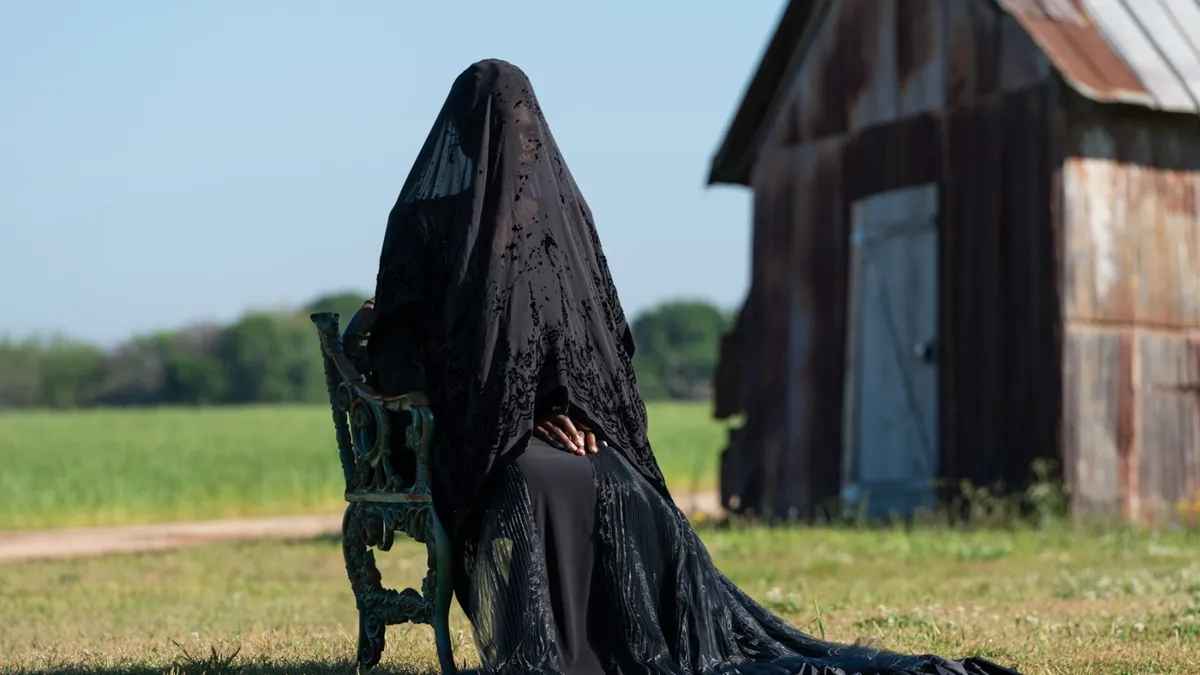
Imagine a scenario where a stranger unexpectedly appears in your front yard, without any prior notice or introduction. This mysterious individual is seated on a chair, seemingly of their own bringing, and draped in a long, black veil that obscures their identity. They are not in a hurry to leave nor do they show any inclination to approach the house, which is nestled in the serene outskirts of rural Georgia. Instead, they remain a silent observer, watching and waiting for an unknown purpose. This unsettling encounter sets the stage for a gripping narrative.
In this tense atmosphere, we meet Taylor (played by Peyton Jackson), a teenager thrust into an adult role far too soon. Faced with this unexpected visitor, Taylor instinctively shifts into action mode, contemplating how to remove this intruder from their lawn. Meanwhile, his younger sister Annie (portrayed by Estella Kahiha) expresses her fears, likening their situation to a scene from a chilling episode of The Twilight Zone. Lastly, we have Ramona (played by Danielle Deadwyler), their recently widowed mother still grappling with the aftermath of a tragic car accident that claimed the life of her husband, David (played by Russell Hornsby from The Hate U Give).
Determined to confront the mysterious woman (played by Okwui Okpokwasili), Ramona steps forward to ask, “Who are you, and what do you want?” Although the woman offers no clear response, she cryptically reveals to Ramona that she has been praying for her to arrive, stating that “today is the day… Today. Is. The. Day.”
The film, The Woman in the Yard, unfolds like a tightly woven short story, masterfully leveraging this beguiling and enigmatic situation to extract maximum dread. It maintains an air of mystery without rushing to provide all the answers about the unfolding crisis. Viewers learn that the farm was initially purchased by David to alleviate Ramona’s feelings of confinement associated with urban living, complete with a chicken coop to symbolize a new beginning. However, the weight of guilt and grief over David's passing has left Ramona in a state of emotional numbness.
As the narrative progresses, the family faces escalating challenges: the power is out, Ramona's cell phone is dead, and the household is perilously low on food and supplies. The atmosphere is thick with tension, underscored by a profound sense of absence even before the cryptic woman arrives. The standoff between the family and the visitor intensifies, drawing the confrontation from the yard up to the front steps and beyond, hinting at a dramatic climax.
The Woman in the Yard skillfully delves into themes of grief, isolation, and the struggle for closure following a loved one's death. As the characters navigate their complex emotions and confront their fears, the story reveals deeper insights about family dynamics and the haunting presence of the past. The film's ability to create suspense while exploring profound emotional landscapes makes it a compelling watch for those drawn to psychological thrillers.
In conclusion, this film not only captivates with its eerie premise but also resonates on a deeply emotional level, making it a noteworthy addition to the genre. As viewers unravel the layers of mystery surrounding the enigmatic woman, they are left questioning the boundaries of reality, grief, and the human experience.